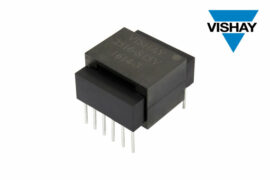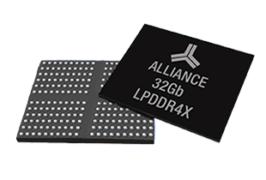IEEE802.11, Bluetooth, UMTS, GSM—radio communication protocols that couldn’t be more different, and yet they do have something in common, namely electromagnetic waves that can disrupt how integrated circuits process signals. EMI-immune circuits provide a remedy for high-frequency interference.
Wireless data transfer has many benefits, and a variety of communication protocols have become established in recent years. However, the high-frequency electromagnetic waves that are used to enable devices to communicate with one another wirelessly can cause severe interference in electronic circuits and components.
The frequency range of HF signals can be as low as 3MHz and as high as 30THz, depending on the definition. The biggest problem with most analog ICs is their susceptibility to demodulating and intermodulating high-frequency interference outside of their linear frequency range. This effect is especially relevant when signals need to be amplified or adjusted.
In mobile communications, microwave frequencies of between 900 and 2700MHz are used. Even if these signals are way outside the bandwidth of a relevant operational amplifier, they can still cause electromagnetic interference (EMI). Interference may be caused if an HF signal with a wavelength of 900MHz at 33cm or of 2.4GHz at 13cm for example is sufficiently longer than the connectors on the housing of the operational amplifier. This results in conductors, PCBs, bond wires and component connectors acting as effective antennas to receive this high-frequency interference.
A real-life example would be a car radio, which uses an operational amplifier to boost its audio signal. If high-frequency signals that go beyond the actual usable bandwidth of the device are introduced into the circuit, this causes the voltage at the op-amp input to fluctuate. This in turn has a negative impact on the signal quality at the op-amp output. The supply voltage of the op-amp spikes suddenly, which causes a shift in the output voltage.
How can interference in circuits be prevented?
With analog low-frequency circuits, it is often possible to install filters and shielding that damp or filter out interference signals, but this often produces large, complicated circuitry that also makes the device more expensive, making it less competitive. Not only that, but there are barely any low-cost filters for circuits with a bandwidth of more than 20kHz that offer sufficiently good properties without also significantly impairing the functional bandwidth.
Op-amps with strong HF immunity may provide a remedy here. Figure 1 shows an example comparison of a signal at the output of two op-amps when a 2.4GHz HF signal is received. The middle of the figure (red) shows the movement at the output of an op-amp with installed EMI immunity, while the behavior of an amplifier without HF immunity is shown at the bottom. In the latter case, interference (transient voltage spikes; glitch) is clearly visible upon receipt of the HF signal, which also results in an offset voltage shift at the output. Periodic interference will cause regular malfunctions. With sporadic interference, which commonly occurs in practical applications, malfunctions are often not even noticeable. An example here are the data packets transmitted at non-regular intervals for digital radio. This interference can cause malfunctions in the entire electronic equipment.
Suppliers such as New Japan Radio (NJR) offer solutions tailored to this very problem. NJR’s new NJU7755x series is delivered as standard with a supply current reduced by up to 85%, an amplification bandwidth of 1.7MHz and strong EMI immunity, making NJR’s op-amps perfect for precise analog sensor signal processing. Figure 2 shows the various high-frequency ranges; the range with the blue background is where the NJR op-amps offer EMI immunity.
This shows that high-frequency interference is to be expected even in audio frequency bands. Suitable op-amps filter these out without massively driving up the total cost of the circuit.
Find components at www.rutronik24.com.










